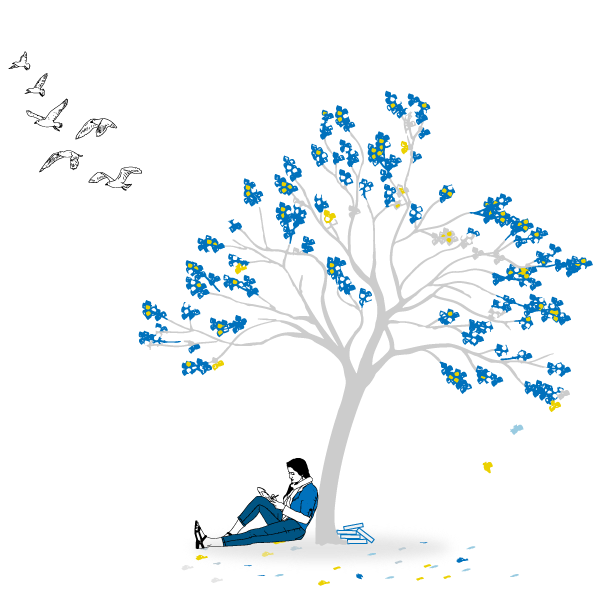Deep Travel by Tony Hiss
How can someone tap into Deep Travel at will?
Imagine you’re on a treasure hunt, but all you know about the next clue is that it will reveal itself within the next three minutes. Your best hope of finding it before anyone else does is to pay close attention to anything and everything around you for the next two hundred and forty seconds.
So Deep Travel can work in a familiar setting?
No place, however well we know it, stays exactly the same from day to day, or even from hour to hour—there are always different combinations of people present, or different plays of light and shadow. The most famous examples of this are the more than thirty canvases Monet painted of the facade of Rouen cathedral in the eighteen-nineties. Same church, even the same viewpoint—he had rented a room across the street. But each one astonishingly different; sometimes the church looks brooding, ancient, gray-brown, cavernous, almost collapsing on itself. Other times it looks robust, sparkling, brand new, almost too brightly white to look at head-on.
In a well-known place, it’s also a matter of remembering (at least for the moment) how much more we could find out about things we’ve seen and used a thousand times before, such as, for instance, a sidewalk. What is it that makes us feel safe and even looked after, simply because we’re walking along a narrow ribbon of concrete wall turned sideways and laid horizontally across the ground? How different would this street feel—how would it sound—if this sidewalk were, instead, a dirt path or cobblestones?
What are some ways of retaining the feeling of profound meaning brought on by Deep Travel after a journey is over?
After a trip there is a normal process of memory collapse—but memories are not actually lost, merely filed. Deep Travel memories can in fact be retrieved quite easily, often by simply asking yourself a question about some aspect of a day or a moment that seemed flooded with meaning. How did the air feel when we got out of the car after that long drive to X? What were the first sounds we heard that magical Sunday in Y? Why did the moon look so large that night in Z?
Do you feel there are travel writers who truly capture this feeling?
Two of my all-time favorites are Tahir Shah, now forty-six, who deliberately sets off on epic, swashbuckling adventures to remote areas, like the jungles of Peru or the mountains of Ethiopia, and Sir Patrick Leigh Fermor, now ninety-five and still writing, who as a teen-ager quietly walked the length of Europe, open and alive to and fascinated by everything and everyone who came his way. What makes Fermor’s long-ago trip even more poignant today is that he began his trip in 1933, shortly before so much of what he encountered and brings so gloriously to life was obliterated forever.
Most good and I would say all great travel writers have opened themselves up to a Deep Travel awareness—that’s what frequently makes their writing so compelling. Some travel writers seem so permanently imbued with a Deep Travel sensibility that just reading their books can evoke a similar state of mind, even in the armchair-bound.
Read original article here.
